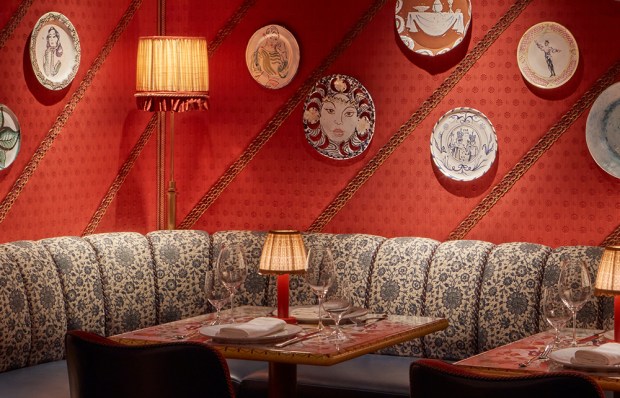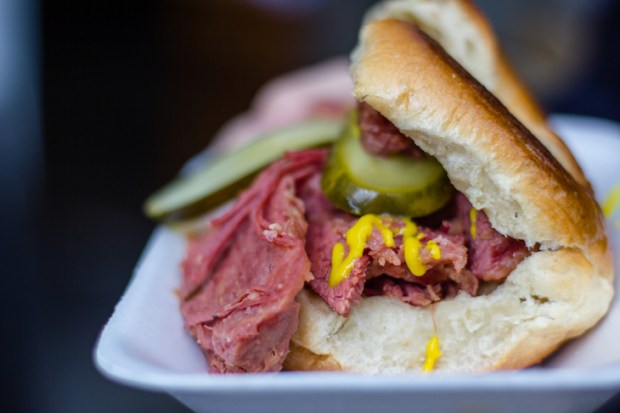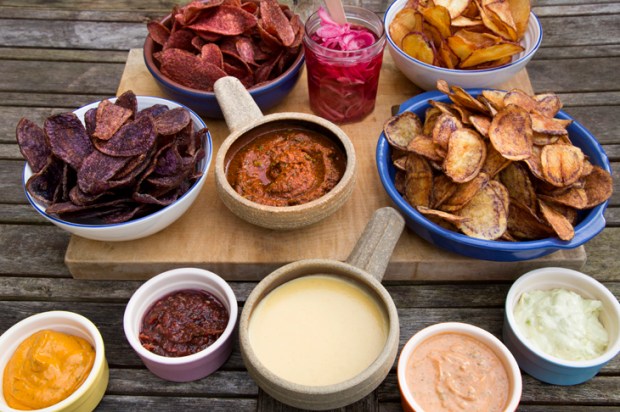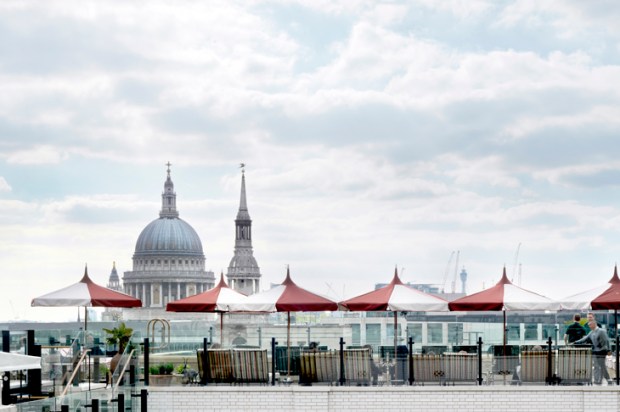Aquavit is a ‘uniquely Nordic–style’ restaurant in the St James’s Market development between Regent Street and the Haymarket. This development — a pleasingly neutral word — is seriously misnamed, for there is nothing of the market about St James’s Market which seems, rather, to have stripped itself of the ordinary bustle of life; it is a shell for a management consultancy that has landed on the already overpolished West End. With its cool stones, tinted window and alarming orange woods, it is, stylistically, a tribute to the international luxury hotel and, is, therefore, a place entirely devoid of culture. It is a glossy blank that harms — and charms — no one. It is nowhere.
Here sits Aquavit, expressing the vogue for Scandinavia in haute cuisine form; why do I feel, increasingly, that as we lose a real world we build a new and tinny one? I hate fashion, but some people need guidance in what to talk about, so that they do not talk about the things they need to talk about; why not, then, establish Scandinavia, or rather a fake idea of Scandinavia imagined by Elle magazine, in your own stomach?
This trend began with ‘Nordic noir’, a genre of television programme in which Scandinavian women exhibit a range of mental health conditions as punishment for having careers. (These, themselves, owe something to the original Prime Suspect, in which Helen Mirren excelled herself into full-blown alcoholism.) It reached an interesting zenith in Fortitude — a television series that I adore, in which Norwegians are driven mad by wasps and practise cannibalism — and in hygge, a brand of Danish mindfulness which involves buying expensive crockery and wearing wool indoors. I cannot see the point of hygge because I would rather be mad than find serenity by wearing Christmas jumpers in July, but that is just me. I scowl at the idiotic headline ‘Hygge — nine ways to be more Danish’. Really?
So Aquavit, which joins the Nordic Bakery and the Scandinavian Kitchen in London’s shining Little Scandinavia. It follows branches in Tokyo and Manhattan, where it won two Michelin stars; but, as ever in these glossy barns, I wonder: who is the constituency? Who is the Aquavit regular?
It is a vast space with wooden walls and huge windows to the street; strange blue rugs the colour of the Caribbean Sea; a double-height ceiling for an echo; a long bar with spindly blue stools; orange banquettes; weird golden candelabras, or robotic octopi; grey; swirling marble floors.
The food: it is fish, red meat and berries, arranged into tiny, luscious plates of art. We eat superb gravadlax; rich blood pudding; sharp herrings; bloody lamb; light monkfish. It is all fresh and finely wrought food insanity. The arctic bird’s nest, a pudding, is a lovely arrangement of sugar, pastry and berries and, as only sugar can, it rips my head off.
This careful fine dining is soothing, because Aquavit is wide-spaced and peopled with smiling, softly spoken, beautifully dressed waiters, but it feels to me like false serenity and, I suspect, as close to real Scandinavia as Rules is to real Edwardian London. It is a moneyed pastiche and so there is nothing vivid or joyful about Aquavit; it is much too fine for that. It feels like an expensive restaurant run by people who meditate when they aren’t shopping in Ralph Lauren or staring at fish. (I pause and wonder how to put the hate into meditate, in copywriting style — and then realise I do not have to.) The ideal Aquavit customer, then, is the protagonist of Fifty Shades of Grey; it is lush and comfortable, and seethes with the emotional violence of the too-complete dream-world. I think it wants to spank something. It spanks fish.
Got something to add? Join the discussion and comment below.
Get 10 issues for just $10
Subscribe to The Spectator Australia today for the next 10 magazine issues, plus full online access, for just $10.
You might disagree with half of it, but you’ll enjoy reading all of it. Try your first month for free, then just $2 a week for the remainder of your first year.














Comments
Don't miss out
Join the conversation with other Spectator Australia readers. Subscribe to leave a comment.
SUBSCRIBEAlready a subscriber? Log in